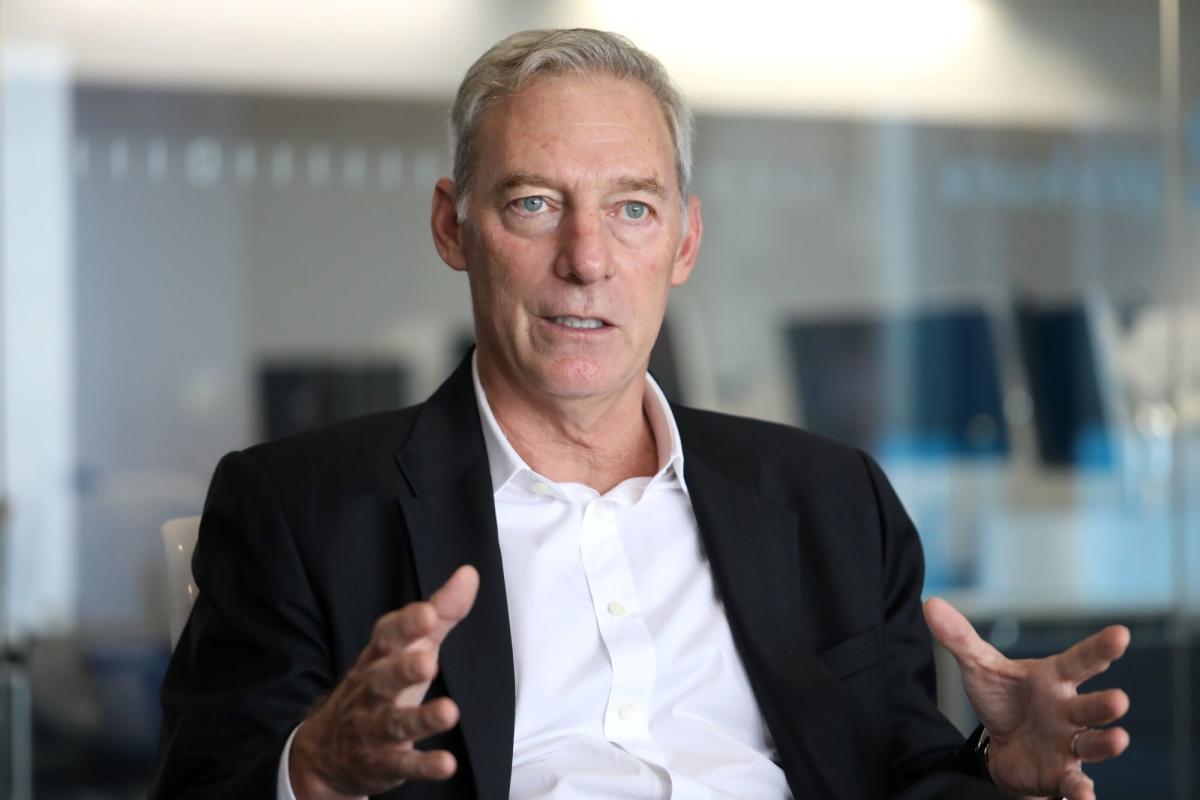Feb. 3—MORGANTOWN — Outdated.
Less safe.
Bad for business.
These days, popular opinion on one-way streets seems to be … well, a one-way street—get rid of them.
That’s exactly what cities across the country are doing.
Should Morgantown follow suit ?
Yes, according to Craig Grossman of the Grossman Group.
Grossman spent the last year studying South High Street on behalf of numerous stakeholders, including Main Street Morgantown, the city of Morgantown and Monongalia County.
Among his takeaways—the one-way streets have got to go.
“One-way downtowns are kind of a dinosaur of the past, quite honestly, ” he told Morgantown City Council. “It’s something that most communities are undoing because they’ve found people drive faster through cities when they’re one-ways. If they’re two-ways, it’s easier to find the destination you might be looking for, and we think it’s just healthier for mixed-use development to really be successful if the traffic patterns are changed.”
He’s not alone in this opinion.
According to Geoff Boeing and William Riggs, in an article for the biannual research publication Transfers Magazine from August 2023, speed is the lone benefit of one-way street systems.
They explain one-way streets rose to prominence as a byproduct of suburbs, allowing employees to more quickly get in and out of city centers.
“Just as one-way streets make traffic faster, two-way streets can slow it down—improving safety, accommodating multimodal travel, increasing livability and property values, and helping customers more easily reach businesses, ” they wrote. “Two-way street networks create safer and more pleasant environments for those who walk, bike, use micromobility, or take transit.”
The main arteries through downtown Morgantown are all one way—High, Spruce, Walnut, Pleasant.
And they’re all state routes.
The Dominion Post reached out to the West Virginia Division of Highways to ask what it would take for the city to alter the flow of traffic.
“In a proposal of that magnitude, there would ultimately be changes to signals, signage, parking, turning radiuses and other traffic engineering elements that would need time to be studied by the WVDOH Traffic Engineering Division, ” DOH Chief Economic Development Officer Perry Keller explained.
Keller went on to say the ball is in Morgantown’s court.
“The City of Morgantown could initiate the process by presenting the WVDOH with a proposal to eliminate one-way traffic on the streets named in your inquiry, ” Keller said. “The City of Morgantown could also work with its local MPO … on a study for eliminating the one-way streets which would be given to WVDOH.”
That’s exactly what’s happening.
In January 2023, the Morgantown Monongalia Metropolitan Planning Organization Policy Board signed off on a $500, 000 microsimulation study of the city’s downtown.
Led by consulting firm Kimley-Horn, the study will provide a model showing what traffic will look like in the future if current trends continue and there are no changes.
Then, based on directions from a steering committee, the consultants can model the changes local stakeholders are most interested in.
It’s already been stated that one of the major changes to be explored is the elimination of the one-way street pairs.
MPO Executive Director Bill Austin said the initial data presentation is expected by the end of May.
While due diligence is being done locally, Grossman said the verdict is already in nationally.
“There’s enough study out there and enough research and documentation from other cities that everybody who’s gone that route has never looked back and said, ‘Gee, we made a mistake, ‘” he said. “It encourages so many things in terms of ease of connectivity, circulation, and there’s even reports that traffic incidents go way down when you get into two-way traffic because people are more inclined to slow down.”
Boeing and Riggs agree, explaining the long-term impact of a one-way system reaches well beyond traffic patterns and ultimately leads to “economic disinvestment in the urban core and more unpleasant—and often dangerous—streets for pedestrians and cyclists.”
“One-way streets benefit drivers ; but in a full accounting, the benefit may be quite small. More importantly, two-way streets benefit everyone else. They can improve air quality, safety for cyclists and pedestrians, and promote patronage of local businesses.”
Signup bonus from



